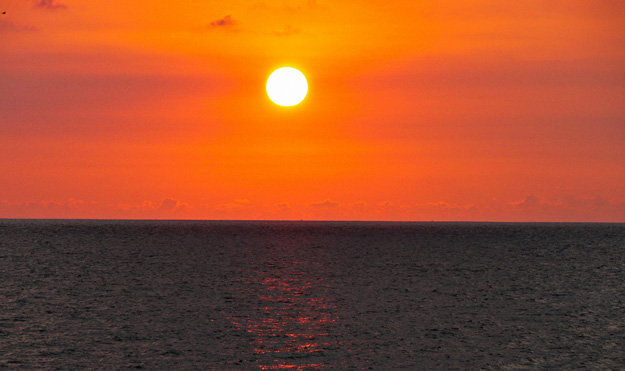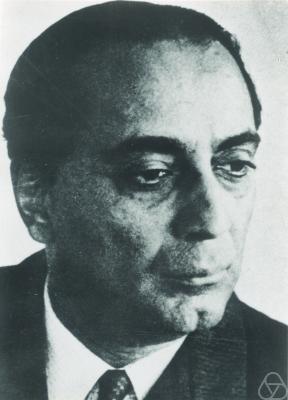Safe nuclear: India's thorium reactor

Sunset over Kerala, India, where there is a lot of thorium in the beach sands. Some people think the sun should set on conventional uranium reactors in favor of safer thorium, a substance that is plentiful around the world.
One of my recurring themes on the energy blog here at SmartPlanet is that the world can have a safer nuclear future, provided the industry shifts to altogether different types of reactors and fuel.
I’m not talking about the passive cooling technologies that are bolt-ons to conventional uranium-fueled, water-cooled reactors, although those do augur safety improvements.
Rather, I’m referring to reactors that run on thorium instead of uranium fuel, and/or that depart from the water-cooled designs used in almost all of the 430+ commercial reactors operating around the globe today. They have generic names like “molten salt reactors” and “pebble bed reactors.”
For the next several weeks, I’ll be on the thorium trail, writing periodic updates and insights on the element - named after the Norse god of thunder - that many people believe should replace uranium as nuclear fuel. Thorium trumps uranium, they say, because it does not produce the nasty, weapons grade waste the way uranium does. And the waste is not as long-lived - about 300 years compared to tens of thousands or more for uranium. What’s more, thorium is more efficient than uranium.
Like other alternative nuclear technologies, thorium is not new. In the U.S., Oak Ridge National Laboratory developed a thorium-powered, molten salt nuclear reactor in the 1960s. Safe thorium reactors could have defined the nuclear power era, then in its formative years. But the Nixon administration scotched thorium in favor of weapons-friendly uranium. The Cold War was on, both the U.S. and the Soviet Union were building an atomic arsenal…
 Homi J. Bhabha, known as the father of India’s nuclear program, planned a thorium future. He died in a plane crash in 1966. Conspiracy theories have followed.
Homi J. Bhabha, known as the father of India’s nuclear program, planned a thorium future. He died in a plane crash in 1966. Conspiracy theories have followed.Enough history. I take you to India where late last week, V Narayansamy, minister of state in the Prime Minister’s Office told the the upper house of Indian Parliament (called the Rajya Sabha) that India will indeed build a thorium reactor, according to India’s Deccan Herald newspaper (my report today is a cyber journey - I was not physically in India, although my feet have been and will be taking me elsewhere on this thorium sojourn).
India will start construction around 2016-17 of a water cooled, thorium-fueled reactor that deploys “heavy water” as its coolant, the paper reports.
Narayansamy’s notification to India’s Parliament last week was a foregone conclusion - perhaps a formality. I noted in my November report on alternative nuclear power, published by Kachan & Co., that India will build a thorium reactor. China is also developing thorium reactors and other alternative nuclear technologies, along with advancing conventional nuclear.
The report shines a little more light on India’s plans.
The Deccan Herald describes the reactor as a “research reactor” based on designs form Bhaba Atomic Research Centre in Mumbai, led by R K Sinha, chairman of India’s Atomic Energy Commission. It will use a “heavy water” coolant. Heavy water reactors - associated with Canada - use water that includes an isotope of hydrogen known as deuterium. Heavy water reactors can can make more efficient use of fuel than can standard water-cooled reactors.
Some thorium proponents, like Kirk Sorensen, co-founder of Huntsville, Ala.-based Flibe Energy, say that the best way to optimize thorium is to put it into a molten salt reactor, such as the one that Flibe is designing, based on Oak Ridge’s work.
Nevertheless, thorium supporters say that thorium is safer and less weapons-prone even in a more conventional reactor design, such as in India’s case.
India’s thorium reactor will be 300 megawatts. That’s small compared to the gigawatt-plus size of many conventional nuclear reactors. But it’s large scaled compared to the capacity that renewables plants like solar or wind could provide.
And in an interview with The Guardian newspaper last November, Sinha noted that India hopes to export the technology to countries such as Kazakhastan and the Gulf states. The Guardian suggested that Vietnam is keenly interested in the Indian design, which Sinha did not confirm.
“Many countries with small power grids of up to 5,000 MW are looking for 300MW reactors,” Sinha told The Guardian at the time. “Our reactors are smaller, cheaper, and very price competitive.”
The November Guardian story indicated that construction would begin around 2013-14, slightly earlier than what the Deccan Herald stated last week.
India’s Bhaba Atomic Research Centre is named after the late Homi Jehangir Bhabha, who framed a plan in the 1960s for a thorium-based nuclear future in India, a country which possesses a lot of naturally occurring thorium in its beach sands.
Thorium is common around the world. It occurs in monazite, a mineral also rich in rare earth minerals, which are in great global demand and which China currently controls - the mining of thorium thus help solve energy and rare earth issues.
You can return to the main Market News page, or press the Back button on your browser.

